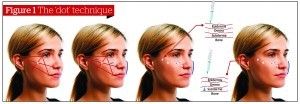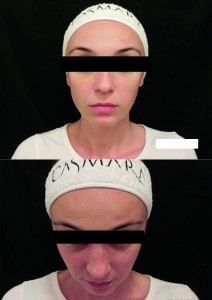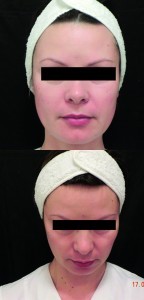Investigation aims
The dermal filler market is now one of the fastest growing markets in aesthetic medicine, but as a result of the current global economic situation, many patients are keen to spend less money, while achieving an optimum treatment outcome. However, owing to the uncontrolled popularity of the volumising procedures — especially when carried out by low-level practitioners — patients can become conscious of hyper-volumisation, and this reinforces the popular trend of retaining a youthful and natural look, without an obviously treated result. Furthermore, there is now a great quantity of cheap dermal fillers available on the European market that have no serious evidence-based background, and limited characteristics of viscosity, elasticity and cohesivity have created serious dissonance among doctors practicing volumisation techniques.
For these reasons, the authors carried out an investigation called the LIFT© Concept: Less Invasive Facial Treatment. The idea of the Concept is to achieve the best results of volumising procedures without using more product, but taking into account the anatomical, physiological and ageing peculiarities of the patient’s face and therefore achieving the best possible results with minimal amounts of product.. The aim of the study was to investigate the following parameters:
- ■ Symmetry and asymmetry
- ■ Using the golden ratio in practice and whether it is generally useful
- ■ How patients see themselves and how the investigators saw them
- ■ How to obtain the best result, with a youthful and natural effect.
These are the questions that are important to all specialists, from beginners to well-established professionals. Taking this as a background, the authors attempted to analyse their theoretical and practical experience and systematise with the subsequent treatment goals:
- ■ How to perform fewer injections
- ■ How to use less product
- ■ How to spend less money.
As a result, the authors have developed the LIFT© Concept, through which it is possible to carry out fewer injections, using less product, but with the same result of regaining a youthful look that is, in many cases, more natural.
With regard to Glogau’s classification of the ageing face, the authors decided to find the best solution to injecting volumising fillers in the correct areas. To do this, the facial bones and tissues were analysed,while considering the work of Dr Stephen Marquardt dedicated to the Phi, divine proportion1, and the ‘Beauty Mask’2. As it turns out, the Golden Decagon Matrix is not only the geometric ‘source code’ for DNA, but also of the attractive human face. The basic framework of the face is this matrix, which is referred to as the primary Golden Decagon Matrix, and forms the geometric framework of the face. In order to construct the face, 42 secondary Golden Decagon Matrices, which are exactly the same shape as the primary Golden Decagon Matrix but smaller, are mathematically and geometrically positioned in the primary framework. It is these 42 matrices that ultimately form the various components of the face. The colourised Golden Mask appears as the primary and secondary matrices fade away leaving only the parts of themselves that actually form the mask and its components3.
The preliminary results of the authors’ investigation were described in ‘Dot technology of the face volume rejuvenation’4, as presented at AMWC 2011.
Study design
This was a prospective, open-label, randomised (all the patients were divided using the blind method) study in which a 20 mg/mL smooth, highly cohesive, viscous hyaluronic acid filler was used for facial volume restoration. This study was not sponsored by any company, and there were no grants (financial or product) for the investigators or patients. The conduct of the trial complied with the provisions of the Helsinki Declaration for studies in humans; however, it was not a clinical trial as such and for this study ethic approval was not required.
Study procedures
The study comprised four visits. Visit 1 was the injection day, which took place on day; visit 2 was the follow-up, which took place at day 14 (± 7 days); visit 3 was the follow-up, which took place at the end of 12 month; visit 4 was the follow-up, which took place at month 18. Patients completed a questionnaire at the second and last visit to rate their experience.
Patients and methods
Investigators injected the 20 mg/mL smooth, cohesive hyaluronic acid volumising filler (Juvéderm® VOLUMA™, Allergan) with a needle, according to their usual practices. The use of anaesthetic depended on the preferences and usual practice of the treating physician.
The authors analysed the patients’ face bone anatomy, subcutaneous fat and treated mostly those from the second group (Glogau classification, aged late 30s and 40s) who were not post-menopausal. The main aim here was to select patients with thinner skin and whom did not have too much subcutaneous tissue, and with only a mild volume loss. Patients who presented thus found that the results fared much better — even in those from the older classification groups.
All patients were female (n=90), healthy, Caucasian and aged between 25 and 50 years. Only two patients were younger than 25 years, and three older than 50 years. All patients were divided into three groups according to face shape: triangular, round, or rectangular. The general approach to treatment with hyaluronic acid allows the possibility of further anti-ageing correction methods for a more natural rejuvenation.






